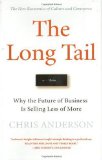Social Tagging – PR or Marketing?
Tom Pick, B2B marketing expert and author of The WebMarketCentral Blog, wrote a great series of posts about social tagging. I’ve included links to his comprehensive look at how social tagging can help drive B2B traffic below. Instead of repeating Tom’s excellent work, my question is who’s responsible for social tagging – PR or Marketing?
I guess it depends on the resources of your client. For a company with a full marketing department, this work may fall to the person responsibel for search engine optimization/search engine marketing (SEO/SEM). This person is responsible for establishing programs that drive the organic traffic to your website.
From my perspective, social tagging should also fall on this person’s plate. If a company doesn’t have someone focusing on SEO/SEM, then this is a possible opportunity for PR. Like all PR, social tagging must be done strategically and methodically. And from Tom’s work, valuated over a period of 2 – 3 months. Couple of things that come to mind:
1. Track what you’re tagging and to map out the timeline. Whether you’re working with your client or have access to analytic information, reviewing traffic patterns to these specific pages will be one way to measure the effectiveness of your program.
2. Without understanding the different social tagging sites (at least for now!), let’s assume that other people can also bookmark your links. If this is possible, then consider getting updates with each new bookmark through something like google reader. For example, I get updates each time our website is bookmarked by someone on del.icio.us.
And me? I guess I’ll start with a couple of pages, see what happens and go from there.
Source – Tom Pick’s The WebMarketCentral Blog, Social Tagging Series:
- Part 1: Alexa Rankings
- Part 2: The Worst
- Part 3: Specal-Purpose Sites
- Part 4: B2B Traffic Building
- Part 5: Tier 3 Sites
- Part 6: Tier 2 Sites
UPDATE: I forgot one more: Part 7: The Best
Measuring PR: The Quick and Easy Way
I was reading an article in PR News on what success looks like based on one’s client and goals. This article got me thinking about the types of measurement that is near and dear to my heart.
I know there is discussion about using formulas to determine the value of PR based on advertising values or other methods to determine share of voice. Granted, I think this is worthwhile for a larger corporation. But as a start-up company, doing more detailed analysis is overkill.
Frankly, CEOs just want the basics and my time – like yours – is valuable. I don’t recommend including articles resulting from news release distribution. I don’t do an analysis of voice or messages as the volume is manageable. And if I were to provide this report on a regular basis, I need a quick and easy way to input and maintain this information (see excel sheet below). Overall, I provide three key statistics: total number of articles, features vs. mentions and circulation numbers.
1) Total Number of Articles: This provides an easy base for measurement. I can compare the volume from a month-to-month basis, and eventually, year-over year.
2) Features vs. Mentions: I do believe it’s important to separate when an article focuses on an announcement versus a mention. This provides a sense of how well you’re placing articles about your news, reports and case studies. As this program develops and more reporters become familiar with your company, I would expect the number of mentions to increase.
3) Circulation Numbers: I recommend using BPA audited circulation numbers where available. Otherwise, I’ll recommend taking the average number of site visitors or subscriber base number listed in the media kit. To me, this is the easiest number to use regarding the possible reach of an article. Again, it’s not about accurately determining the value of PR, it’s providing a baseline for your executive.
4) Tracking PR to Marketing: In a previous post on my friend’s blog, I had mentioned other ways to track PR. Though this may not be a regular component of your reporting, consider providing the number of clicks or conversions resulting from PR placements when available.
In the end of the day, getting positive media coverage is more important to me then spending too much time on measuring and justifying PR. If you have to resort to spending hours creating weekly status reports and complicated measurements to convince me of your value, then you’ve missed the point!
I would love to hear any other quick and easy ways to measure PR.
Seed Words Make Your PR Flower
In my previous post, Search and Find – SEO Your Press Release, I mentioned how keywords play an integral role in your press releases. Since that post, I’ve learned more about how to find these keywords and determine the effectiveness of these keywords for PR.
There are several tools out there to help research keywords. Since we use Wordtracker, I’m going to show the steps from this software.
1. Research Seed Words: To build a relevant set of keywords, start with a general list of seed words. These are general terms that you think are relevant from a search perspective. For example, I did a search on “public relations,” getting 100 results with the most searched terms at top. Though the public relations term came back with a healthy number of results, some searches may yield little or no results. When this happens, continue to expand your universe of seed words until you come back with a healthy return.
2. Review the Results: Review the list of words to determine the number of current searches and predicted number of searches on that term per day. If the results are too vague, you can begin narrowing the search term to variations of the word, such as PR, media relations, etc. However, be careful of narrowing your search too much as you may limit the possibilities.
3. Competition for Keywords: Once you have one set of terms,you’ll want to know how many pages compete for these words on Google, Yahoo and MSN. For example, using public relations would be very competitive with over 111 million pages. However, “health public relations” yields only 13,500 pages.
4. Research, Evaluate, Research: As with everything I’m learning about SEO/SEM, it’s all about research, evaluate and research again.
And for you tech pr folk out there, “technology public relations” was not in the top 100 searches for “public relations.” Something to think about for those technology PR agencies out there. Will I find you if I need a tech agency?
Tracking RSS Feeds
Many companies have RSS feeds for company updates, as this provides people another way to stay up-to-date on your company news and press releases without having to come to the website every other day. Though it’s important to syndicate/distribute news via RSS, you also have to track RSS feeds this as well.
Why? Because if you’re successful in having people subscribe to the feeds, theoretically the site traffic numbers may decrease. From a marketing perspective, if you experience a dip in traffic, you need to demonstrate that subscriptions to your feeds were increasing. Furthermore, this provides you feedback on what content resonates with your audience.
Researching this intriguing question, here is what I found out – some are more laborous than others:
1. Check the server logs: If a request is made, then this is logged on the server. However, RSS feeds are not representative of a person requesting the information , but rather how you set up the feeds to refresh the information. So this may skew the information even if you didn’t look at your feed for weeks.
2. Request an email: You can request an email to track the RSS feed. Though you can track who is subscribing, I believe that anonymity is key for incorporating RSS feeds.
3. Give each subscriber an unique identifier: There are different ways to track unique users but I recommend reading posts on Ask Leo and ongoing as they provide in-depth information on the various ways. Much better than I can.
4. Use an RSS Aggregator: In the end, I like the idea of using FeedBurner to track RSS feeds. It provides a convenient way to view all of your feeds, site numbers and additional options for optimizing your feeds for SEO.
I’m still learning about FeedBurner and will provide a follow-up post on how to best set up the RSS feed. Please leave me a comment if you have any advice/tips & tricks for optimizing RSS feeds.
Search and Find – SEO Your Press Release
 Press releases are an important component of PR. Typically, I focus on writing the right headline to catch a reporter’s attention, while crafting intelligent quotes for my spokesperson. But sometimes, a catchy headline and eloquent phrasing may fall short of helping your client from a marketing and search engine optimization (SEO) perspective.
Press releases are an important component of PR. Typically, I focus on writing the right headline to catch a reporter’s attention, while crafting intelligent quotes for my spokesperson. But sometimes, a catchy headline and eloquent phrasing may fall short of helping your client from a marketing and search engine optimization (SEO) perspective.
2) Title Tags: This is the description that appears when you navigate to a web page. Many search engines weigh title tags heavily for ranking the content of the site. By understanding your client’s general key word groupings, you can craft a title tag that a) includes these keywords and b) accurately describes the content of the press release.
3) Header, subhead, first paragraph: These three elements of your release are important for search engines to evaluate the content of your release. Balance the use of keywords with your client’s messages. Though keyword density (the number of times a keyword appears in the release) is important, don’t overdue as it may be seen as trying to game the search engines.
4) News Wires: If you client is incorporating SEO, then consider paying extra money to SEO your press release. Why? Since the release is distributed to various sites, this can increase the number of links pointing to your client’s website. Since the boilerplate is included in every release, the boilerplate is a great way to incorporate keywords and appropriate links for SEO.
Working with Your Client’s Marketing/PR Team
 I originally posted this on my friend’s blog, Tech for PR. I’m reposting an edited version (in italics) here to kick off this blog!
I originally posted this on my friend’s blog, Tech for PR. I’m reposting an edited version (in italics) here to kick off this blog!
While working at Blanc & Otus, I was proud of how my team responded to clients and the quality of our communications. My team may have hated me for it, but I was very nitpicky about grammar, spelling and formatting for any client facing documentation, such as weekly reports, emails, briefing sheets, etc.
Since moving in-house, I’ve reviewed the work of two agencies and one PR contractor. This has opened my eyes to the vast number of PR agencies – large, boutique and everything in-between – and the level of service available within the industry.
I recognize that PR agencies desire to work with the CMO to ensure that PR is integrated within the marketing strategy. I agree. PR undertaken as an island from marketing doesn’t help a company provide a consistent face to the public.
As a person who may be involved in selecting a PR agency or contractor, my trust is earned by the attention to detail and how results truly map back to my company’s goals. With all the priorities on my plate, I have to confirm that providing this information will truly benefit my company’s marketing goals and not waste time.
Here are my recommendations – based on a start-up company with less than $15,000 a month retainer:
- 1) Use spell check/grammar check – First impressions are key. Paying attention to spelling and basic grammar indicates that you can write well.
- 2) Correct names – This goes to attention to detail. I’ve lost count how many times my name (Cece – the second “c” is NOT capitalized) has been misspelled. Check the signature. Spelling my name and my company’s name correctly tells me that you care about me as a potential client.
- 3) Deliver what you promise – I have a tight budget and demanding deliverables. Be truthful about what you can or cannot do with the budget I have. If you promise me the moon or my budget, I’ll hold you to that. My expectations have been set.
- 4) Staff appropriately – I think the biggest concern I have about PR agencies is the number of accounts an account person manages/staffs. This goes back to being realistic. Smaller accounts require less people who can devote more hours on the account. If you can’t support this, don’t pitch the business.
- 5) Simple measurements – It’s key to provide recommendations on how to consistently and simply measure PR. This will provide a foundation on how to track this back to my organization’s marketing programs.
- 6) Courtesy of Kevin Dugan’s comments: Honesty – Admit when you’re wrong. It’s human nature to hide when you’ve done something wrong, especially in an agency environment when you’re the “expert”. But with emails and status reports, the possibility of being caught in a lie is high. We all make mistakes. Those who admit mistakes demonstrate a maturity and confidence that will reassure me in the long-term. Those who don’t just tells me you don’t know what you’re talking about.
With these tips in mind, go earn my trust!
About
Favorite Service
Recent Comments
- on Going Virtual Isn’t Necessarily the Answer to Replacing Your Physical Events
- on Going Virtual Isn’t Necessarily the Answer to Replacing Your Physical Events
- on Going Virtual Isn’t Necessarily the Answer to Replacing Your Physical Events
- on Going Virtual Isn’t Necessarily the Answer to Replacing Your Physical Events
- on Going Virtual Isn’t Necessarily the Answer to Replacing Your Physical Events
Ads by Google
Favorite Books
Marketing Blogs
PR Blogs
- KD Paine's Measurement Blog
- Micro Persuasion
Virtual Events & Meetings Blogs
- Cisco Virtual Environments
- It's All Virtual
- The Webinar Blog
- Virtual Edge Institute

 Follow
Follow Cece Salomon-Lee is director of product marketing for Lanyon Solutions, Inc. and author of PR Meets Marketing, which explores the intersection of public relations, marketing, and social media.
Cece Salomon-Lee is director of product marketing for Lanyon Solutions, Inc. and author of PR Meets Marketing, which explores the intersection of public relations, marketing, and social media. 


